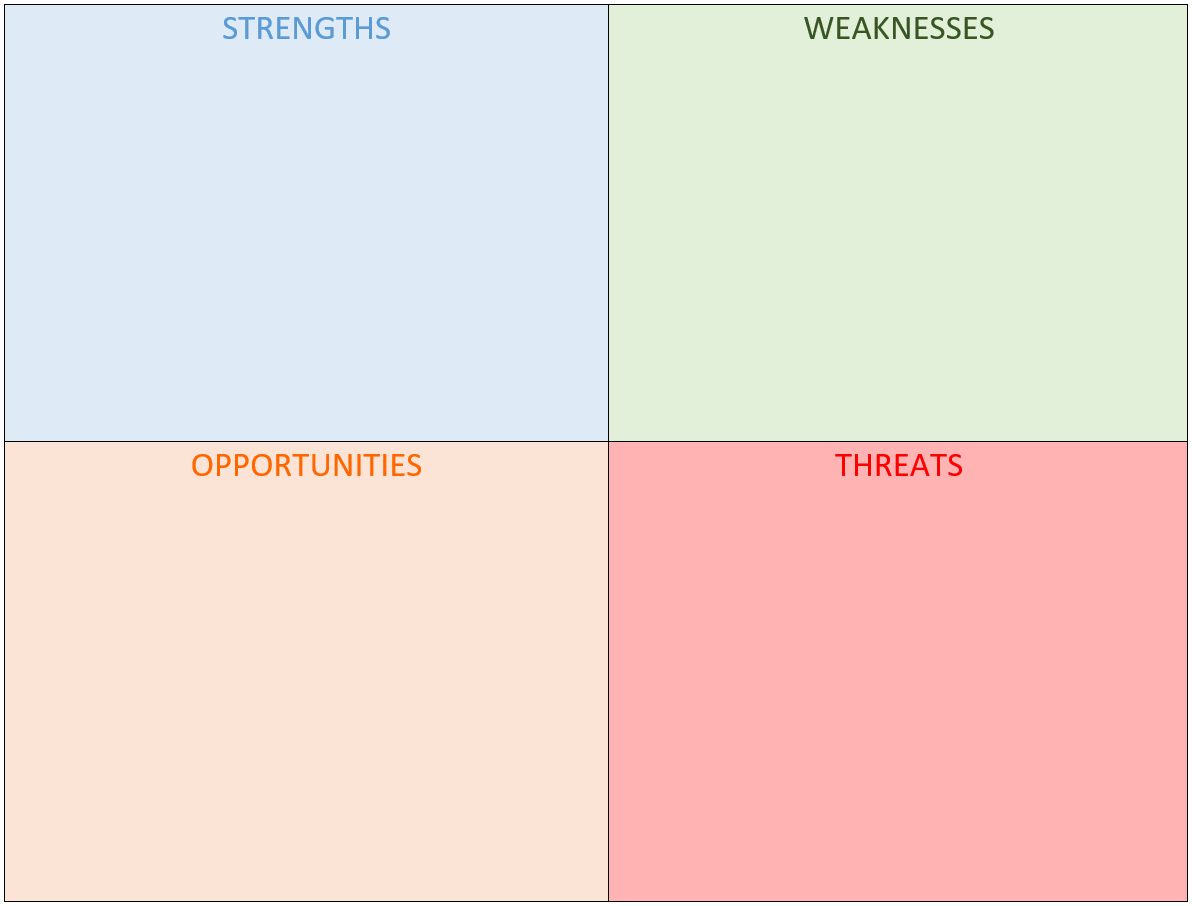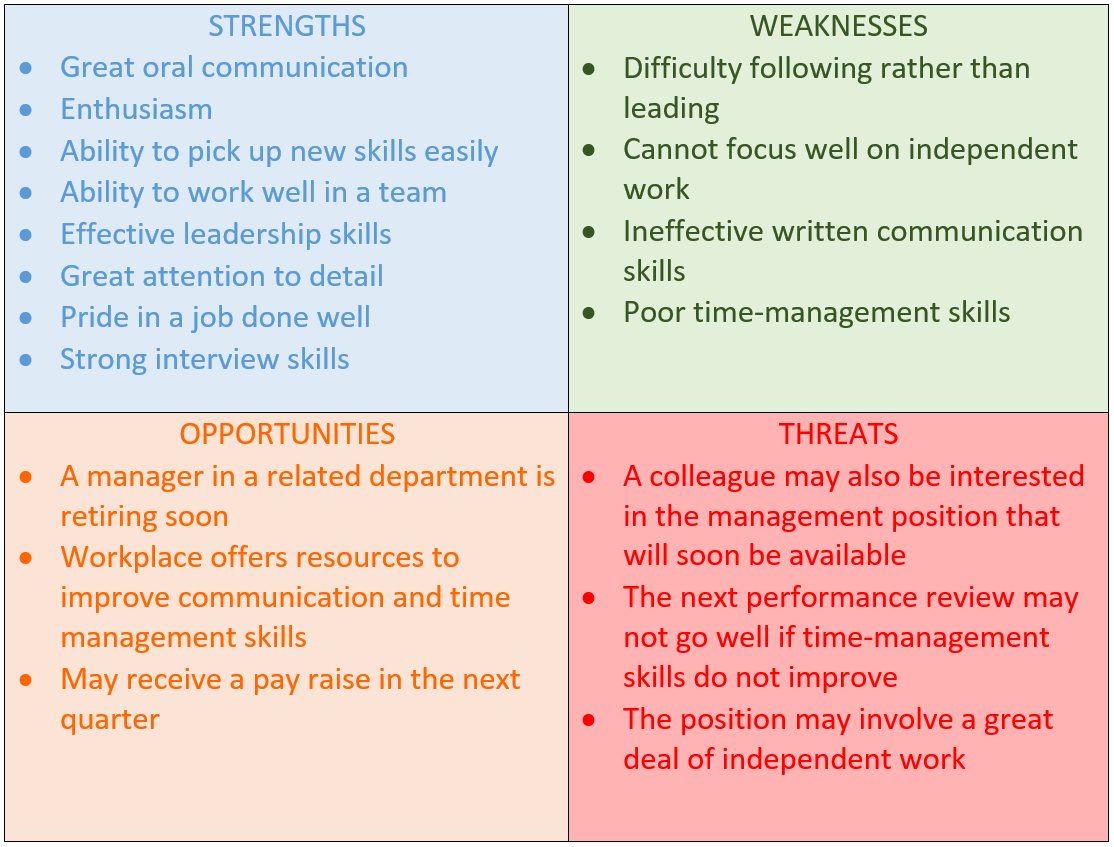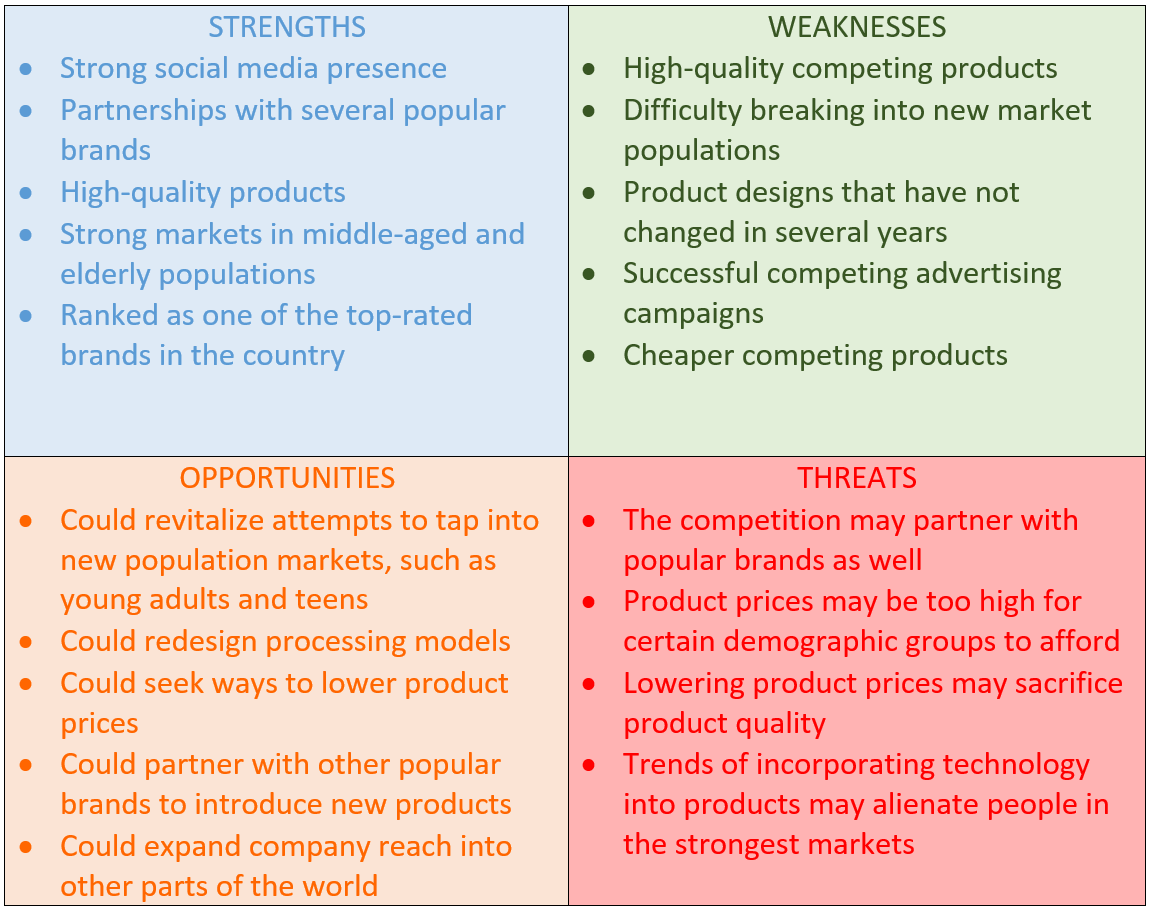Written by Scribendi
Planning for the Future
Where do you see yourself in five years? How about your career? Your business?
These questions keep a staggering amount of people awake at night. All too often, the future can seem like a dark, ominous cloud that looms just out of view. As the old proverb goes, we fear the unknown—and little can possibly be more unknowable than the future.
While there is no crystal ball that can accurately predict future market trends or the steps you should take to optimize your productivity and sharpen your competitive edge, we can offer some advice: Reframe the question. Rather than trying to pinpoint where you think you might be in five years, think about where you want to be at that point in time. Once you have a destination in mind, you can start planning a route to get there. After all, maps are great tools, but they can't help you if you don't know where you're going.
So, what's the metaphorical map in this scenario? We present to you the SWOT (strengths, weaknesses, opportunities, and threats) analysis.
How to Write a SWOT Analysis
SWOT analyses are great strategic tools that are useful in project planning, business development, financial strategizing, and personal advancement. Simple, honest, and to-the-point, they facilitate a profound understanding of your or your business's current standing. Essentially, a SWOT analysis is a comparative list of all your strengths, weaknesses, opportunities, and threats.
There's more power in this process than you might think. You may be only hazily aware of your own strengths and weaknesses. However, thoughtfully recording and reflecting on them creates a thorough, conscious familiarity with both the resources available to you and the obstacles standing in your way. This awareness allows you to map out a path toward your goals with great precision and purpose. Writing a SWOT analysis will help you clearly evaluate whether your goals are feasible according to your resources and needs.
In this guide, we'll break down exactly how to write a SWOT analysis and provide a few examples along the way. Feel free to use our SWOT analysis template, given below, to write your own!
Our SWOT Analysis Template

Strengths
Your list of strengths should focus on your current resources and abilities. It should relate to things that you do or that your company does well. These might be your or your company's accomplishments—both great and small—and the assets that you or your company have. Your strengths give you your greatest edge; they are the resources that propel you forward and that you can continue to develop as you progress.
When you draw up your first SWOT analysis, you may find yourself at a loss. Don't worry—it's difficult for most people to come up with an objective list of strengths and weaknesses on the spot. For your convenience, we've included a list of questions you can ask yourself to get started.
These questions should help you identify a few of your strengths. Remember, while our example questions mostly relate to business strengths, they can also apply to personal strengths. Go ahead and boast as much as you can.
- What sets your company apart from others?
- What do you have that other companies don't?
- What are you most proud of about your company?
- What makes clients come back to you?
- What does your company do well?
- What assets do you have access to?
- What qualities does your company have that other companies try to emulate?
- What has always been easy for your company?
Weaknesses
Listing your weaknesses might be a little more uncomfortable than detailing your strengths, but trust us—doing so will help you in the long run. Understanding the obstacles in your path and the elements of your business or skills you may need to improve is just as important as appreciating your strengths. Once you're aware of your weaknesses, you can start working on them and building your next steps around them.
Your list of weaknesses should pertain to any current problems and challenges. Check out the list of questions below—it should give you an idea of where to start. Again, if you'd rather focus on your personal or career growth, feel free to alter these questions to suit your needs.
- What makes your company blend in with its competition?
- What do other companies have that you don't?
- What are the most common criticisms that you receive from clients?
- Why have certain clients not returned to you?
- What does your company need to improve upon?
- What kind of feedback do you receive from your employees?
- What might your competition consider to be a weakness?
- What has always been difficult for your company?
- What are you unwilling to do or change?
Opportunities
Think about the opportunities available to you as potential future strengths. Your opportunities are the assets, resources, and events that could be beneficial to you in some way in the future. You may need to change some of your current approaches or adapt in other ways to capitalize on these opportunities, and that is not necessarily a bad thing.
Here are some questions you can ask yourself to identify your potential opportunities:
- What is happening in the current market that you could capitalize upon?
- What changes have you been making that have returned positive results?
- What is working for other companies?
- How could you introduce new technology to make your processes more efficient?
- What costs can you cut?
- Could you access new sectors or demographic groups?
- How can you improve or modernize your marketing techniques?
- How can you remove existing obstacles?
Threats
Just as your opportunities are based on potential, so are your threats; these are the possible obstacles or issues that are not yet directly affecting your progress. But this doesn't mean that you shouldn't start thinking about them! Being aware of the challenges that you may encounter will help you either plan around them or confront them with solutions. Try to come up with several future events that may realistically hinder the momentum you build from engaging with your strengths and opportunities.
To get started, take a peek at our list of questions:
- What obstacles might your weaknesses create?
- Do changing market trends negatively affect your competitive edge?
- What might stand in the way of the changes you make to accommodate your strengths and opportunities?
- Do you have a lot of debt?
- Could your competition exploit your weaknesses?
How did you do? Do you feel like you've listed everything? Or do you think you're missing something? Below, we've drafted examples of a business and a personal SWOT analysis to provide you with some perspective on what a completed one might look like.
An Example of a Personal SWOT Analysis

An Example of a Business SWOT Analysis

Final Words
The humble but effective SWOT analysis will produce a detailed map of your current environment—its hills and valleys alike. Knowing how to write a SWOT analysis will provide you with the vantage point you need to choose a direction and blaze a trail toward your goals. SWOT analyses may not be crystal balls, but they are something like compasses. Use them wisely, and you will never be lost.
Image source: cookelma/unsplash.com
Make a Strong Start. Connect with a Professional Editor.
Hire One of Our Expert Editors, or Get a Free Sample
About the Author

Scribendi's in-house editors work with writers from all over the globe to perfect their writing. They know that no piece of writing is complete without a professional edit, and they love to see a good piece of writing turn into a great one after the editing process. Scribendi's in-house editors are unrivaled in both experience and education, having collectively edited millions of words and obtained nearly 20 degrees collectively. They love consuming caffeinated beverages, reading books of various genres, and relaxing in quiet, dimly lit spaces.









